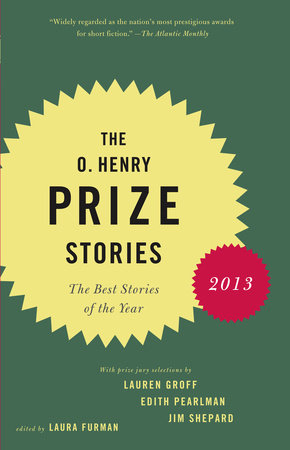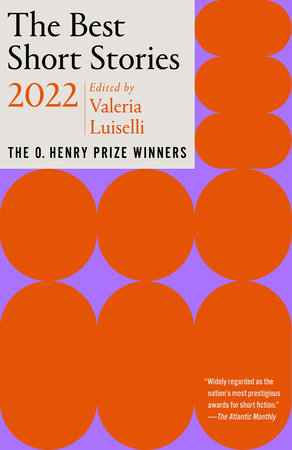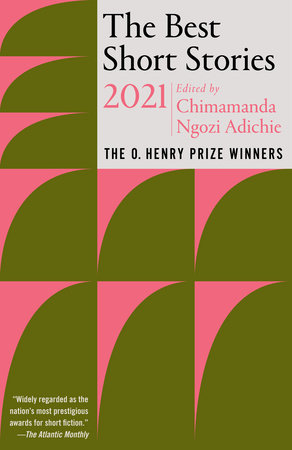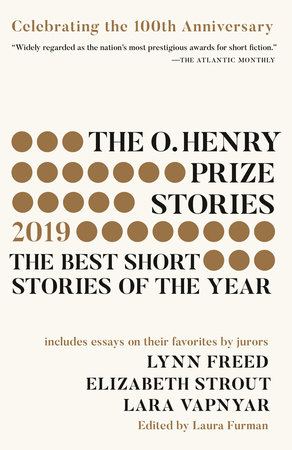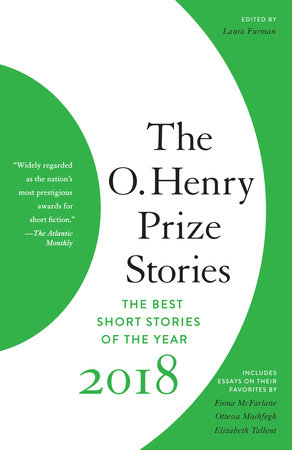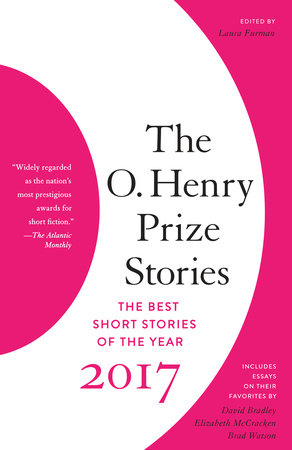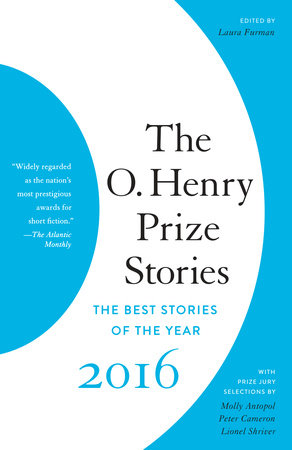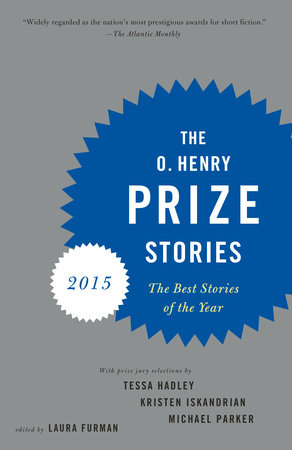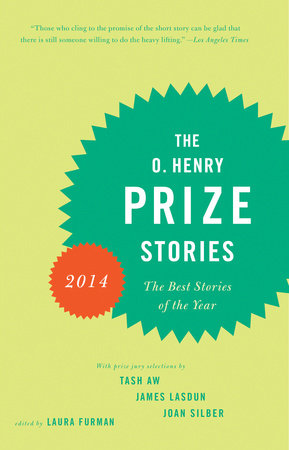Excerpt
The O. Henry Prize Stories 2013
Excerpted from the IntroductionReading blind is an experience that we as readers most often have with a writer whose work is unknown to us. We feel exhilarated when we find a new writer; it’s like meeting a new friend, sometimes like falling in love. The verb “envy” is the one most often used when we see someone embarking on a first reading of Virginia Woolf or Henry James.
Some of the stories in
The O. Henry Prize Stories come from established writers, but they are given a chance to be read blind as well. Every year, a panel of three jurors reads a blind manuscript of the pieces selected as O. Henry Prize Stories; neither attribution nor provenance is given, so the jurors don’t know which magazines the stories appeared in or who the authors are.
All of the stories are in the same typeface and format. From these, each juror picks a favorite story and writes about it in the section “Reading The O. Henry Prize Stories.” This isn’t to say that jurors don’t on occasion detect a writer’s identity. There can be clues in sentence structure, word choice, or subject matter. The biggest giveaway is what one might call the writer’s presence, which includes all evidence of craft and meaning but goes beyond those elements. Each writer has a unique way of finding details in the material and natural world to create the story. The writer’s presence— the way the writer sees— is as innate as the color of the writer’s eyes.
Jim Shepard, a past O. Henry Prize winner and a 2013 juror, chose as his favorite story Andrea Barrett’s “The Particles.” He took note of the narrative’s pacing and what he calls the writer’s restraint. The word is a clue to a special quality of Barrett’s work. Though she often writes about scientists and the past, she uses restraint to hold back an avalanche of extraneous or excessive detail and authorial observation— explanations the reader doesn’t need. She restrains not only the superfluous but also the interesting when its presence would distract from her finely focused narrative.
Implicit in her work is the fascination of what she leaves out (more science, more history), but we trust her to go on without it, pulled by the story exactly as she tells it. Her subject matter is often double— the human drama and the scientific. The reader can almost hear Barrett thinking. In “Anecdotes,” Ann Beattie traces the differences between friendship and acquaintanceship. Conversations between her characters, their overt sharing of anecdotes and the push and pull of their unspoken exchanges, are part of the pleasure of Beattie’s writing. Little by little, the narrator of “Anecdotes” pulls away from the complications of what she thinks about a friend’s mother, Lucia, and what the friend’s mother thinks she should think, complications that extend to a choice between annoying involvement and happy disengagement. During this process, Beattie makes use of a minor character passing by in pink Uggs, and the criticism of the fuzzy boots by the cashmere- wearing Lucia. Beattie’s combination of sharpness and humor might seem to add up to satire, but she doesn’t make fun of her characters or reduce them to generalizations. Rather, she shows us that they’re all worth a look, though some are worthier than others. Beattie’s body of work is a testimonial against the unexamined life, and the title of her 1991 story collection Secrets and Surprises gives a clue to what awaits the reader in “Anecdotes.”
Tash Aw’s “Sail” is about a man who is isolated, estranged both from his country and his sense of who he is. Like the streamlined, arrow-like sailboat we see at the story’s beginning, Yanzu moves lightly and, it seems, effortlessly. When we are introduced to him, he is considering buying the sailboat to help himself over a failed love affair. He does not, however, know how to sail, and his ignorance is parallel to his inability to occupy or direct his own life. Yanzu is different from other people, as different as the boat he contemplates buying is elegant and mysterious. At thirty-nine, he is a successful green businessman in Hong Kong, dresses in expensive “classic” clothing, and is married to a woman he doesn’t like very much. At twenty, he studied chemistry, which the author calls the “intricate study of change,” and left his native Beijing after minor participation in the Tiananmen Square protests. When Yanzu fled to Hong Kong, he wanted to become a writer who would reveal mainland China’s faults and crimes. Yet “the more he wrote about Beijing, the more distant it seemed,” until he gave up the idea of writing. Instead, through his ambitious, materialistic wife, he is introduced into a world of gain, and more or less accidentally makes money. He wishes to learn English, and at the advice of his wife, who treats him with less warmth than she would a designer handbag, he takes private lessons from a restless, rootless Englishwoman with whom he falls in love.
Tash Aw’s story rings with the loneliness and absence of intimacy in Yanzu’s life. As the tale unfolds, Yanzu gains the world in the form of property, status, and bespoke suits, but never finds his own meaning or identity. Aw’s writing is elegant, guided by imagination, and skilled at showing how Yanzu appears to others in contrast to how he feels; the writer lets the reader understand how empty it feels inside Yanzu. Like the chemistry Yanzu once studied, “Sail” is an intricate study of change.
In contrast to the chilly vacancy of the marriage in “Sail,” the marriage of Donald Antrim’s Stephen and Alice in “He Knew” is a perfect synthesis. Antrim’s skilled narration of their journey from Bergdorf Goodman to Madison Avenue and parts north reveals their marriage as a tight duet, perhaps a tango. The objects they covet, reject, and acquire are more than material; each has the shimmer of the spiritual, a communion made tangible. Stephen and Alice are tightly wound, both around each other and within their own screaming nervous systems. Drugged, alert, anxious, suffering, the two cling together during what at first looks like a shopping spree and eventually becomes a fantasy of fertility and stability. Antrim calibrates his story so perfectly that the walk up Madison Avenue past one luxury store after another resembles the Stations of the Cross. By the end of “He Knew,” the reader feels as strung out as the characters, and wishes as much as Stephen does to believe in his desperate hopefulness.
Asako Serizawa’s delicate and subtle story of suspicion and fear, “The Visitor,” takes place in postwar Japan, during the brief visit of Murayama, an ex- soldier, to the narrator, a housewife. He claims to have been a friend of her missing, probably dead, son, also a soldier. Through small, telling details slowly parceled out in dialogue and exposition, we learn that civilians are near starvation, that returning soldiers are distrusted, and that the future is uncertain for all. Nationalism has been replaced by shame and deprivation.
There is a vase in the room where the mother entertains Murayama with food and tea from her scant supply. It is a “pale, ornamental vase [her] husband had sent from China during his tenure there. Like everything else, [she] did not expect the vase to stay long, its delicate color soon to be given up for a sack of grains and a few stalks of vegetables, but for the moment it cheered the room, its quiet shape attracting the eye, settling the soul. . . .” The absent husband is threatening, his wartime activities mysterious.
The narrator and the visitor exchange volleys of dialogue, and when the visitor finally leaves, she discovers a telling photograph he has left behind— which she mistakes for a scene of a mass execution before realizing it is an even more devastating image. Interestingly, Serizawa mentions the idea of restraint in her commentary on “The Visitor” (see page 442), but in that case the restraint exists not as literary technique but as the human quality that keeps her characters at a distance from each other.
In Kelly Link’s “The Summer People,” juror Edith Pearlman’s favorite, the mundane is transformed into the enchanted and back again. The story at first appears to be about year- round residents of a mountainous region who care-take for the rich summer visitors, and in particular about a clever and resourceful girl named Fran. Some of the summer people have more to them, though, than the usual breed of second- home owners: they have the power to transform, create, and heal. They also have the power to imprison, a device often seen in classic fairy tales. Fran tries throughout the story to slip the noose of enchantment, but, as in many fairy tales, learns that what seems like a triumph is not so desirable after all.
L. Annette Binder’s “Lay My Head” makes use of a fairy tale as a story within a story. In a lament, elegiac and peaceful, the sickly Angela reviews the memories and emotions that bind her to life, including the tales of her childhood: “Strubelpeter with his wild hair and Hans im Glück who was happiest when all his gold was lost.” Angela’s mother still believes in remedies for the disease that’s killing her daughter, but Angela believes only in her body’s signals. As the story progresses, the reader is taken on a remarkable journey that lasts until Hans im Glück is free to go home happily, all his gold lost. Binder intersperses the decay of Angela’s body with the progress of her spirit until, amazingly, the reader accepts Angela’s death.


